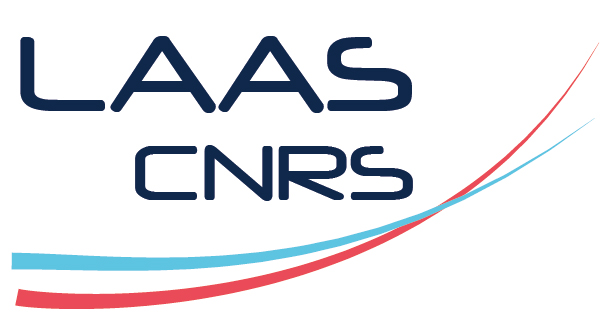Towards vehicular networks (VANET) programmable thanks to SDN technology (Software Defined network)
Vers les réseaux véhiculaires (VANET) programmables grâce à la technologie SDN (Software Defined network)
Résumé
The concept of the vehicle network, which initially advocated essentially vehicle-to-vehicle communications, is opening up to other types of communications involving vehicles and infrastructure (network), cloud or pedestrian, etc. in order to be able to meet the needs of the wide variety of new applications envisaged within the framework of the Intelligent Transportation System (ITS).
The multitude of access network technologies, the very high mobility of vehicles and their high density in urban areas, and the predominance of wireless communications make it a heterogeneous network, with very dynamic characteristics, some of which are difficult to predict, and subject to problems of scale.
Faced with these difficulties, one avenue being considered by the scientific community is to apply the SDN (Software Defined Network) paradigm to vehicular networks as a means of, on the one hand, enabling the hybridisation and unification of the control of the various access network technologies and, on the other hand, taking advantage of the centralised view of the network and contextual data from the cloud to develop new control algorithms that can potentially rely on the prediction/estimation of the state of the network and thus anticipate certain control decisions. It is therefore within this framework that this thesis work is being carried out, the contributions of which aim to develop the concept of SDVN (Software Defined Vehicular Network) software defined vehicle networks.
Four contributions are developed. The first one specifies the architecture of a hybrid SDN vehicle network capable of meeting the challenges described above. This architecture is complemented by a solution for placing SDN controllers. We propose a dynamic approach capable of adjusting the optimal placement of controllers according to changes in the network topology due to traffic fluctuations.
This work also addresses the problem of the overall network vision that an SDN controller can build up, which is the prior vision and cornerstone of any network control function. To this problem, we propose amendments and extensions to the "de facto" topology discovery service designed for wired networks to adapt it to the vehicle context. As a complement to the discovery service, we also offer a topology estimation service based on Machine Learning techniques to provide network control functions with a potential vision of the future state of the network and thus open them up to proactive and intelligent network control.
Le concept de réseau véhiculaire qui initialement prônait essentiellement des communications de véhicules à véhicules s’ouvre à d’autres types de communications impliquant véhicules et infrastructure (réseau), cloud ou piétons, etc. afin de pouvoir répondre aux besoins de la grande variété des nouvelles applications envisagées dans le cadre du Système de Transport Intelligent (ITS : Intelligent Transportation System).
La multitude des technologies réseau d’accès, la très forte mobilité des véhicules et leur forte densité en milieu urbain ainsi que la prédominance des communications sans-fil en font un réseau hétérogène, avec des caractéristiques très dynamiques, dont certaines peu prévisibles, et sujet à des problèmes d’échelle.
Face à ces difficultés, une piste envisagée par la communauté scientifique est d’appliquer le paradigme SDN (Software Defined Network) aux réseaux véhiculaires comme moyen pour, d’une part permettre l’hybridation et l’unification du contrôle des différentes technologies réseaux d’accès et, d’autre part, tirer partie de la vue centralisée du réseau et des données contextuelles venues du cloud pour développer des nouveaux algorithmes de contrôle pouvant potentiellement reposer sur la prédiction/estimation de l’état du réseau et donc anticiper certaines décisions de contrôle. C’est donc dans ce cadre que s’inscrit ce travail de thèse dont les contributions visent à développer le concept de réseaux véhiculaires définis par logiciel SDVN (Software Defined Vehicular Network).
Quatre contributions y sont développées. La première précise l’architecture d’un réseau véhiculaire SDN hybride capable de répondre aux défis décrits ci-avant. Cette architecture est complémentée par une solution de placement des contrôleurs SDN. Nous proposons une approche dynamique capable d’ajuster le placement optimal des contrôleurs en fonction des changements de la topologie réseau dues aux fluctuations du trafic routier.
Ce travail aborde également le problème de la vision globale du réseau qu’un contrôleur SDN peut se constituer, vision préalable et pierre angulaire à toute fonction de contrôle réseau. A ce problème, nous proposons des amendements et extensions au service de découverte de topologie “de fait” conçu pour les réseaux filaires pour l’adapter au contexte véhiculaire. En complément au service de découverte, nous proposons également un service d’estimation de topologie basé sur des techniques d’apprentissage automatique (Machine Learning) pour offrir aux fonctions de contrôle réseau une vision potentielle de l’état futur du réseau et donc les ouvrir à un contrôle proactif et intelligent du réseau.
Origine : Fichiers produits par l'(les) auteur(s)

